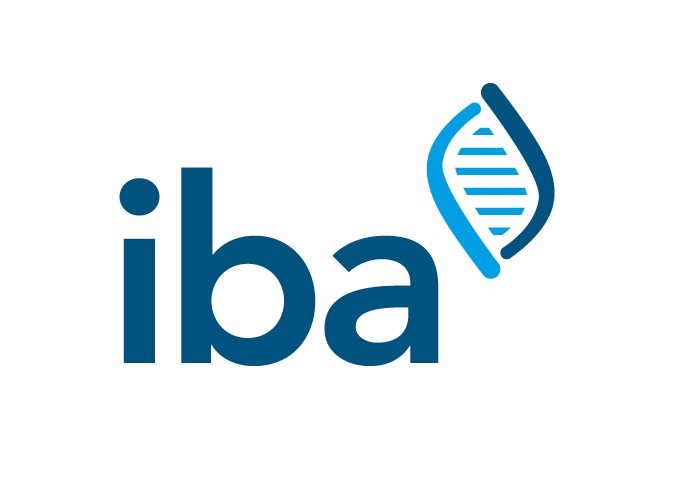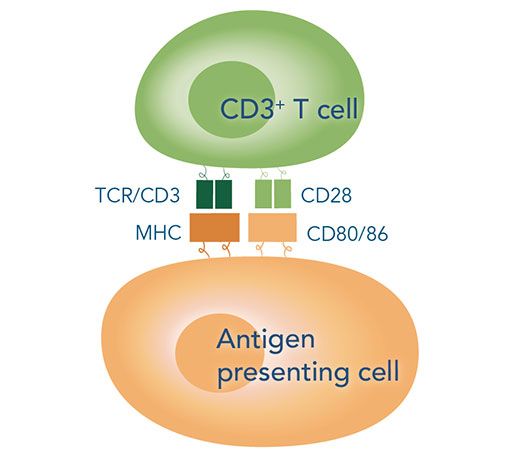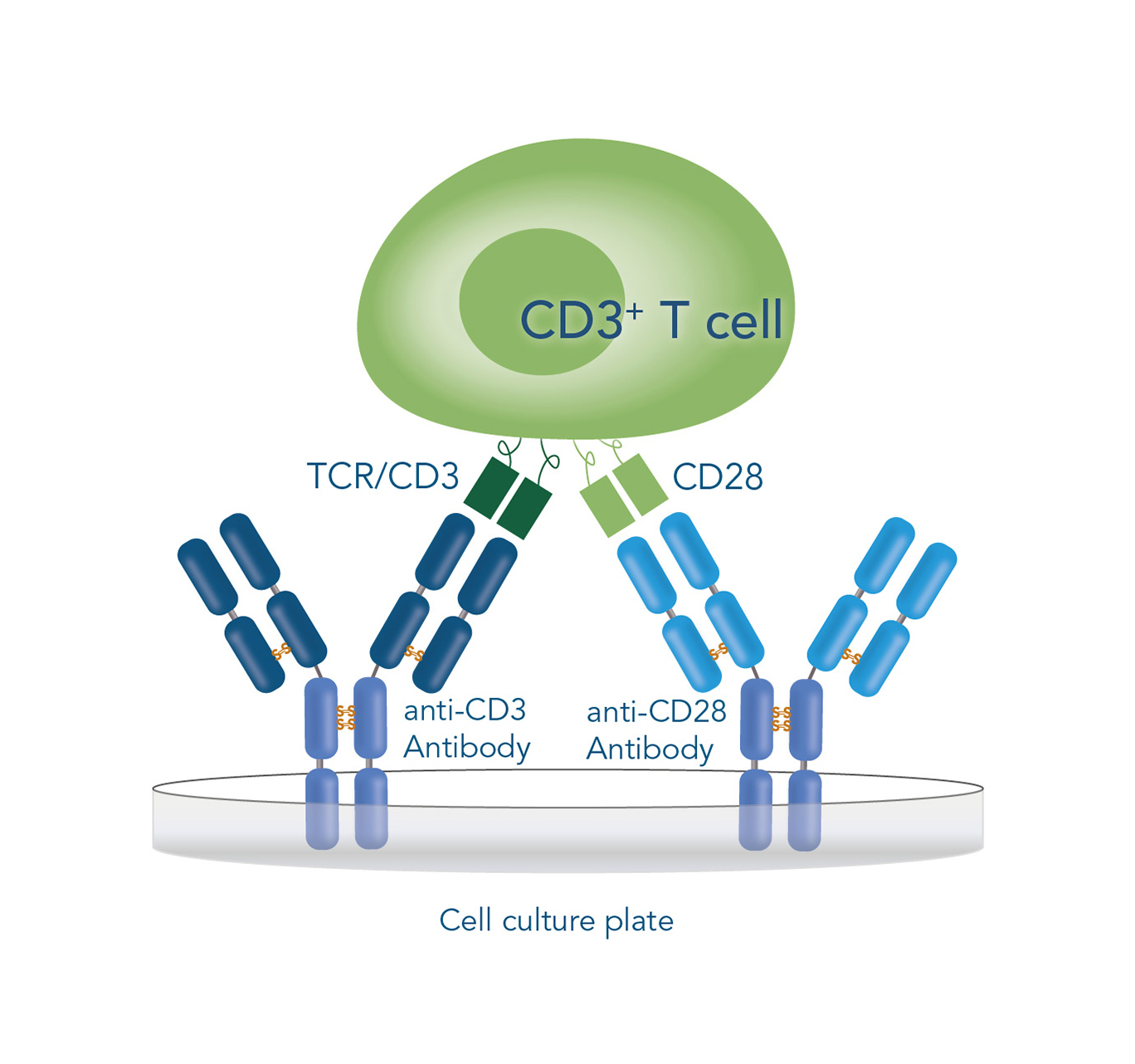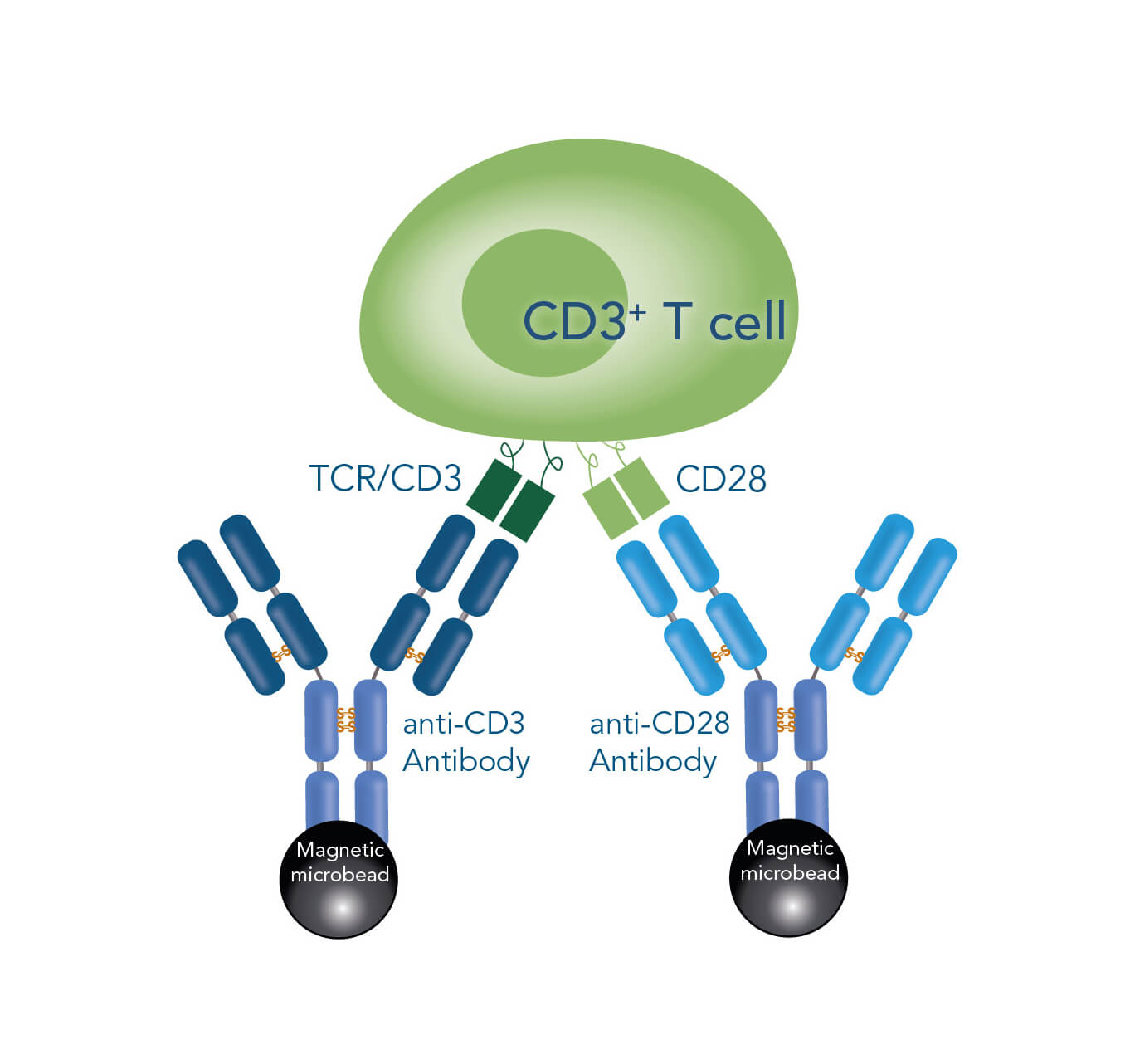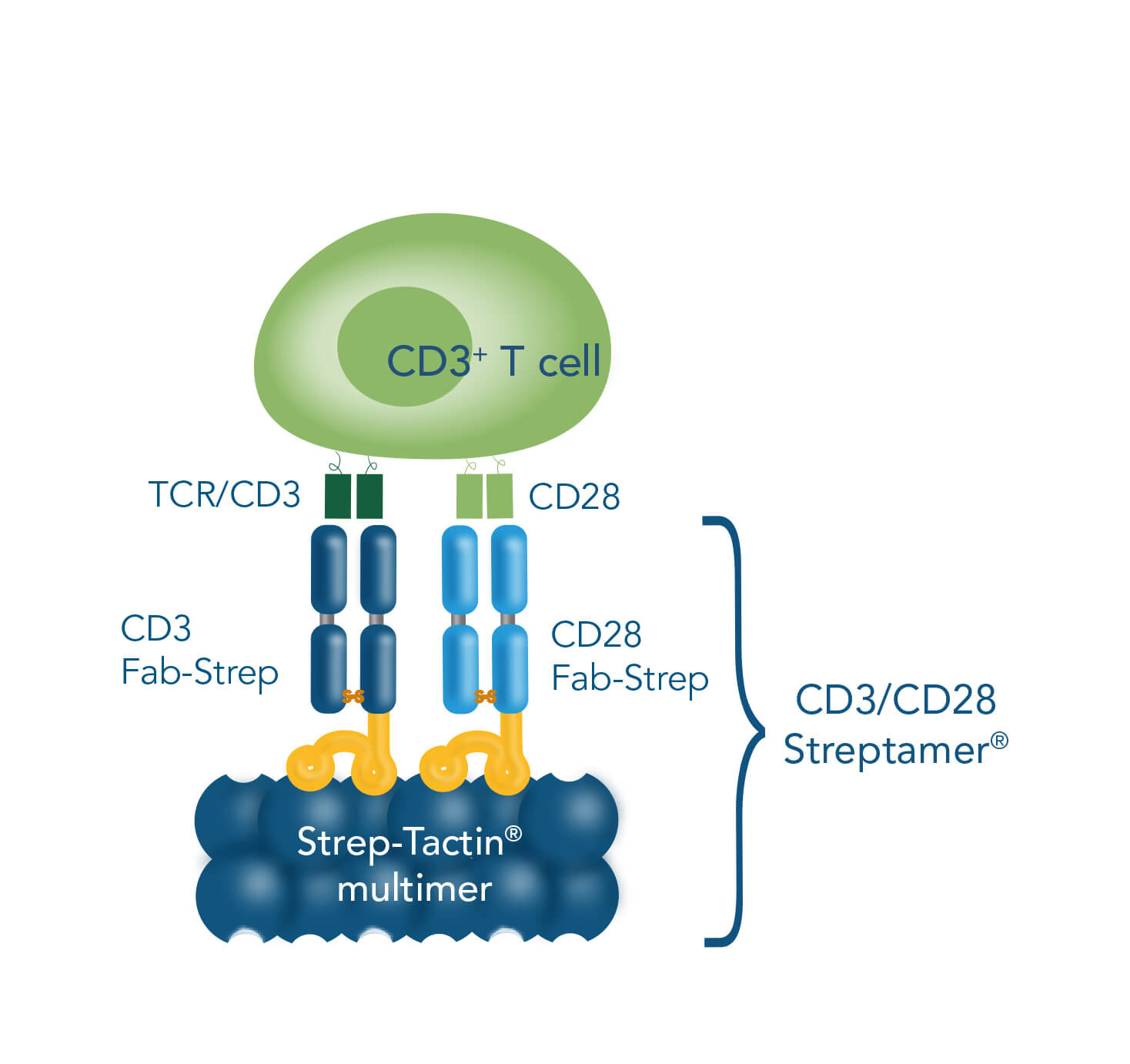T Cell Stimulation and Expansion
The in vitro generation of a large number of functional T cells is important for basic research as well as for therapeutic and clinical approaches dealing with organ transplantation, protective and tumor immunity or the treatment of allergies and autoimmune responses. To achieve this goal, initially the isolated resting T cells need to be stimulated to activate their differentiation and natural immune response capabilities. In a second step, the quantity of the mature cytotoxic, memory and regulatory T cells recognizing a specific antigen is increased by promotion of their proliferation.
In nature, induction of these pathways is strictly controlled by the simultaneous occurrence of two signals. Signal 1 is the major antigen recognition, which means the interaction of the T cell surface receptors with the major histocompatibility complexes (MHCs) of antigen presenting cells (APCs).
While helper T cells carry CD3 and CD4 co-receptors and bind to the MHC class II molecules of dendritic cells, macrophages or B cells, cytotoxic T cells exhibit CD3 and CD8 co-receptors and are therefore able to recognize the MHC class I molecules presented by macrophages or any nucleated cell. Signal 2, also known as co-stimulatory signal, denotes the interaction of the CD28 co-receptors of T cells with the glycoprotein B7 on the APC surface. Only the combination of both signals over a clearly defined period results in interleukin release by the APCs and consequently in downstream signaling in the T-cells, leading to an effective stimulation and proliferation.
